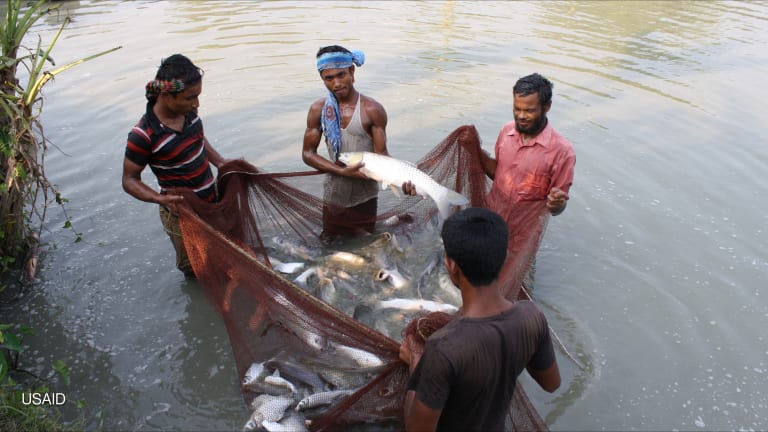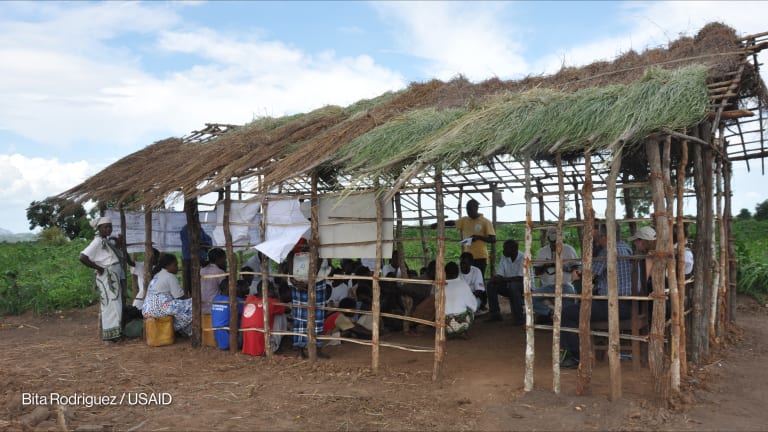
India’s parliament is set to start in August debating a bill that could offer subsidized food to about two-thirds of the country’s 1.24 billion population.
But the ambitious proposal has been dwarfed by the billions pledged in food assistance from external donors — and implementers may have to shift their strategies on the ground to be more relevant.
The National Food Security Bill is just a step closer to offering very cheap food to 800 million Indians as the legislation is already up for debate. If it’s approved and becomes law, the government will spend about $22 billion a year on subsidized wheat, rice and grain, a massive undertaking that signals India’s new economic standing and a new opportunity to transform aid assistance.
“This initiative can help to shift gears if the government steps up its commitment and media, court and civil society can remain vigilant,” Unni Krishnan, food assistance and nutrition head at Plan International, told Devex. “It is important for everybody involved to do a ‘reality check’ and find the best way to complement efforts. Fighting hunger and malnutrition is no solo game.”
Change of tide
Although food assistance from donors is relatively small compared to the government’s massive planned subsidies, aid partners believe they are here to stay and it is just a matter of transforming aid programming to India’s changing needs.
“We bought food locally sometime back. But last year, everything was brought to a close,” Michael Jensen, U.N. World Food Program deputy country director in India, told Devex. “We’re only working in the area of technical assistance.”
Last year, WFP signed an agreement with the government to come up with a best practice model for food distribution. The study has since been forwarded to the central government, which then forwards to the states.
With millions more of people eligible for the program, the U.N. agency is working closely with the local authorities to computerize the food distribution process.
“We’ve been interested for many years now on beneficiary identification and enrolment in government programs,” Jensen said. In the past, WFP has carried out projects to support biometric identification of beneficiaries.
The U.N. agency is also looking for ways to include a more nutritious food basket.
Under the bill, 75 percent of the rural population and 50 percent of urban dwellers are allowed to buy five kg of grain each month at subsidized rates: three rupees per kilo of rice, two rupees for wheat, and one rupee for sorghum and millet.
“Right now, the program [just] has rice [and] wheat. But that’s not the most nutritionally-correct food basket,” Jensen said. “We believe we can make it more effective by advocating for a slightly varied food basket. That’s our strategy.”
Ready for change?
As aid partners in one way or another are transforming their engagement, is India also ready for change?
“India has been stepping up its relief support for many of the recent disasters in parts of Africa,” Krishnan said. “The Indian government and some Indian companies are reaching out to many places as part of official aid policy and corporate social responsibility.”
The right to food policy incorporated in the program is a result of a landmark court ruling that recognizes food not as a dole-out entitlement but a right. And through this bill, food security debates are picking up momentum to tackle hunger and malnutrition in the so-called land of the plenty, yet a nation of hungry.
But just like any policy, implementing this program is crucial.
“There’s large number of children and young people who are now having engagement with these social issues. Engagement of the youth and children is absolutely crucial in implementing a policy,” Krishnan said. “Any big government must be monitored closely by civil society and local partners.”
Read more development aid news online, and subscribe to The Development Newswire to receive top international development headlines from the world’s leading donors, news sources and opinion leaders — emailed to you FREE every business day.








